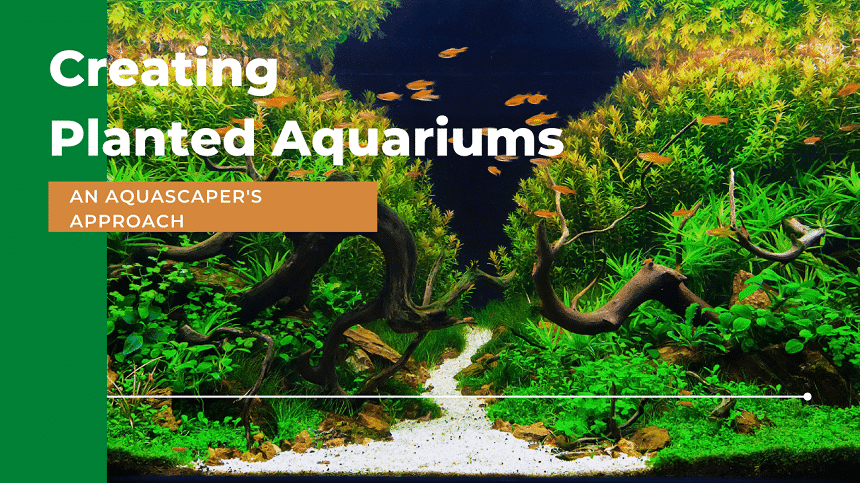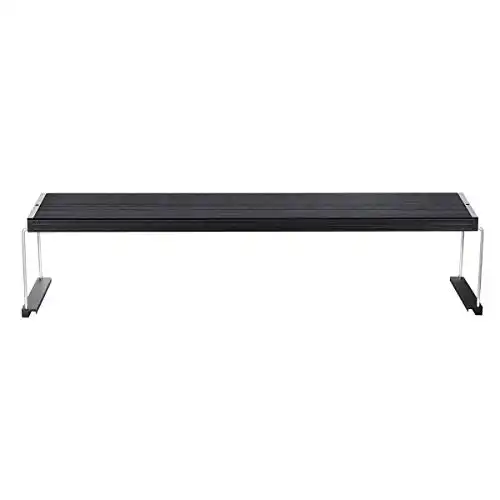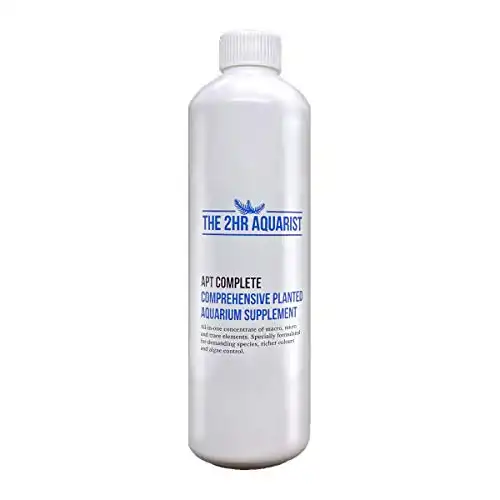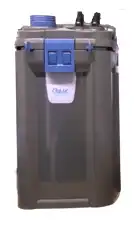Thank you for visiting! By the way… any links on this page that lead to products on Amazon and other stores/partners are affiliate links Aquarium Store Depot earns a commission if you make a purchase.
Planted aquariums are a great way to add life and color to your home. They can give a sense of tranquility in an otherwise busy space, and they also provide a utopia for freshwater fish giving them the most ideal environment. But maintaining one can be tricky – there is the lighting, fertilizing schedule, water parameters, etc. The complexity of a planted tank may want you to pull your hair out! That said, if you want to maintain your own plant tank with care and attention (and without having to run back inside every five minutes), I’m here to provide some secrets that will help you do so successfully.
I’m here to provide you an Aquascaper’s approach. This will not be a newbie guide that will suggest to you a rookie setup. I’m here to provide you long-lasting future proof concepts and suggestions. I want you to build a show stopping aquascape that will blow away your guests and give you the zen that you are seeking. That is best achieved with quality advice and quality setup. Let’s get started with this guide!
The Basic Question – What Do You Want Out Of A Planted Aquarium?
This is the number 1 question you need to ask yourself when setting up a planted aquarium. To make it simple for you I will ask you this question
What Type Of Planted Aquarium Do you Want?
Are you looking for easy maintenance? Championship level? Do you want one of those crazy planted tanks you see on Pinterest and Instagram? All of this is attainable if you set your goals. It all starts on if you are in the low-tech or high-tech side of the hobby. This all relates to CO2 usage. There are four levels of planted tanks that you should be aware of and they are:
- Level 1 – Low-tech non-CO2
- Level 2 – Low-tech CO2 supplementation with SeaChem Excel
- Level 3 – High-tech CO2 with low light (Most aquascapers will eventually fall here)
- Level 4 – High-tech CO2 with high intensity lighting
Before we can go over each level we should understand the role of CO2 in our aquariums.
Planted Aquariums and CO2
CO2 levels drives grows in a planted aquarium. It’s not nutrients, proper lighting, or substrates. CO2 is the center and driver to rich, fast, and supple healthy plant growth in your aquarium plants. There are multiple levels of non-CO2 usage and CO2 usage. 50% of plants dry mass is carbon. As we learned in my CO2 System Article, aquatic plants in the wild enjoy evaluated levels of CO2 as high as 50 PPM.
Since CO2 drives the growth in our planted aquariums, we have to design the rest of our system around it. Let’s next talk about the decision to do CO2 or not.
To Add or Not to Add CO2

What do you sacrifice the most when you decide to not use CO2? What you sacrifice is growth and the showcase look. There are plenty of low light aquarium plants that will do well without CO2, however, you will sacrifice their growth rate and thickness by excluding CO2.
In essence, they are generally living in a non-CO2 environment. These non-CO2 low light plants will grow, but their true potential is unleashed with a CO2 system.
This is why I recommend even if an aquarist is planning on not using CO2, that they at least consider dosing CO2 using SeaChem Excel. SeaChem Excel functions as an alternative to CO2 injection. While not as effective, Excel will still improve the growth rate of aquarium plants 2 – 4 times versus the traditional 10 – 25 times plant growth rate you will experience with injection.
Excel dosing puts us in level 2 territory. We can still build plenty of wonderful aquascapes with this and not have to deal with the added complexity and cost of a CO2 system. I am definitely an odd ball compared to many bloggers online, as I do not recommend level 1 if one is getting into planted aquariums. Call me vain, a purist, or spoiled – but I do love me some killer looking aquascapes and I want you to have the ability to enjoy building to that level.
For those of you looking to do amazing aquascapes and looking to get into reds, stem plants, and lush carpeting plants, CO2 injection is a must. It’s hard to visualize what these aquascapes will look like, so I will explain that later in this post when we get into aquascape styles and examples.
When it comes to a quality CO2 system, I highly recommend CO2Art. They sell an excellent combo package that gives you all the essentials you need to get start. The box below comes with a inline diffusor, my favorite method of diffusor. I would love a CO2 reactor, but unfortunately those cool looking AquaMedic CO2 reactors can’t be found in the US – so this is the best you can get in the states.
Use Offer Code ASD10%Off
The highest end offering by CO2Art. This package includes everything you need to perform consistent and the highest quality CO2 injection in the industry!
Which Substrate is Best?
When it comes to planted aquascapes the hierarchy I believe in is CO2>Substrate>Lighting>Fertilizer. CO2 drives the 3 others, substrate is our next starting point, planted aquarium lighting pushes CO2 intake, and fertilizer is how we balance everything.
Substrate comes into planted tanks as this is our base for nutrients for our aquarium plants. Whether you decided on column feeding plants or roots plants, substrate will still play a role. A good substrate for a planted aquarium will be an active, nutrient-rich substrate to serve as a baseline for nutrient uptake for our aquatic plants.
When it comes to planted tank substrates, many articles you may come across may stop at a basic overview of substrates. I’m going to give you the professional aquascapers view first then break it down to a more realistic senario for beginner. You should always understand the professionals perspective so you know the end goal and why quality investments are key for long term success.
The secret for professional aquascapers is utilizing a layer system. This layer system is founded on ADA principals and are the following:
- Layer 1 – Nutrient-Rich Planted Aquarium Power (Base Powder)
- Layer 2 – Nutrient-Rich Aqua Soil
- Layer 3 – Inert substrates and decorative caps
Each layer plays a role in a professional aquascape. Let’s dive in!
Layer 1 – Nutrient-Rich Substrates (Powder)
This is the first level in a professional aquascape, This is also known as “power sand” or power soils with ADA being the major brand and benchmark in this field. This fine powder serves as a bottom layer in a planted aquascape. This substrate only covers the first 1.5 inches of the bottom. The rest of the layers will have other substrates.
The purpose of this power sand is to provide a nutrient rich base to the bottom floor for our rooted and carpeting plants. This will ensure your bottom level has a strong base and can be refreshed with root tabs in the future.
Unfortunately, ADA power sand is difficult to find online. It is best to purchase from an LFS or directly from AquaForest Aquarium – the main US distributor of ADA products.
Layer 2 – Nutrient-Rich Aquarium Substrates (Soil)
Layer 2 are our Aquasoils or our active substrates. This is what many planted aquarium enthusiasts work with. They will work primarily with this soil and spread it across their tank so they can use rooted plants and carpeted plants to cover their aquarium. It is also designed to be sloped and can maintain its shape when doing so. The most famous aqua soil is ADA Amazonia. It is the most nutrient rich and can be difficult for new aquascapers to use.
The Best Planted Tank Substrate
The world's standard in active substrates for planted tanks. Created by brand that founded modern aquascaping
For new aquascapers, Tropica aquasoil is a great alternative that is well proven in Europe and touted by the likes of world famous aquascaper George Farmer.
If you are working with rooted plants, it is a good idea to use layer 1 and this layer in combination to have a rich base for your aquatic plants to absorb in as they grow. There are DIYers who like to use organic soil as an active substrate. I’m guilty of being a purist, so I won’t cover it in this post, but I will have one of my other aquascapers cover it in a future post.
The next layer can be decorative or functional
Layer 3 – Inert Substrates

These can have two functions in a planted tank. In a planted aquarium that is low tech with mostly column feeding aquatic plants, this substrate can be spread all across the aquarium to cover the bottom. There are also beginner based substrates like Caribsea Eco Complete that can be use as a functional substrate for beginner friendly rooted tanks.
The second function is decorative. In a professional aquascape, you will see inert substrates cover the other 2 layers and “cap” the substrates for aesthetic purposes. Other times, the functional layers are separated into sections in the aquascape where layer 1 and 2 are together for carpeting and rooted plants and there is a separate area of the fish tank with the inert substrate that serves as a foreground and an area for bottom dweller fish and shrimp.
One awesome accent you can do with inert substrates with separate sections is make pathways in the aquascape that make your aquarium look like a living underwater forest. These can create spectacular scapes and are often features you will see in award winning Aquascapes
Purpose of Lighting
A proper light has the right PAR, spread, and spectrum. I preach these 3 principles in any aquarium lighting topic I cover.
PAR
PAR (or Photosynthetically Active Radiation) is the measurement of light intensity in our aquarium. Quality manufacturers will have done their R&D and will have their PAR figures published for customers to see. PAR levels by plant species varieties. The ones that require the least amount of PAR are known as low-light plants in our tech.
For PAR, I have this sheet from the Barr Report below that shows you the ranges. The lights I’m going to talk about today will get you in these ranges. Check out my best LED lights for Planted Tanks post for more in-depth detail on PAR.

Spectrum
Spectrum is all about hitting the hitting the desired wavelengths in the Red, Green, and Blue spectrum as shown below from ADA. Spectrum is another complex topic. The lights I’m going to mention below have this covered. To break it down simply, the best lights that hit these desired wavelengths are branded as “RGB” lights in our hobby.

Spread
Spread is the last principle. Because these are LEDs, they need to be spread and diffuse. All the best LED systems will have a diffusor built in to work around the limitations of LED as they are naturally focused lights. This prevents shading and ensures even coverage in your fish tank.
The 4 levels of Lighting Systems
A high quality light will have all 3 principles checked. When it comes to the plant tank market, I can separate planted aquarium lighting into 4 categories:
- Level 1 – Entry Level Lights
- Level 2 – Lights For Dense Planting (Most of you will fall here)
- Level 3 – Lights For Advanced Aquaccapes
- Level 4 – Professional Level Lights
Level 1 – Entry Level Plant Lights
Entry level lights are for simpler aquascapes. This lights will allow you to keep the low light plants and easier to maintain aquatic plants. These lights will include such lights like the Twinstar B and C Series, Chihiros A-Series and C-2, and the Fluval Planted 3.0.
Level 2 – Lights for Dense Planting
This is the level I look at when it comes to Aquascaping. At this level level, you should be able to keep around 3/4 of the live plants available in the trade. If you desire carpeting plants like Monte Carlo and densely planted aquascapes this is where we start.
For these lights, we look at the Twinstar E Series, Chihiros WRGB, ONF Flat Nano.
Level 3 – Lights for Advanced Aquascapes
These are the lights you go to where you want to grow a bunch of harder to care for plants and red plants. These lights have the ideal PAR, Spectrum, and spread and will successfully grow all aquatic plants. Your main concern here is balancing light, CO2, and nutrients so you don’t have a bunch of algae growth. For this range you would be looking at the Twinstar S Series, Chihiros WRGB, Chihiros C2 RBG3, and ONF Flat One+
Amazing for Advanced Aquascapers!
The newest generation WRGB II by Chihiros offers all the bells and whistles with timers, spectrum modification, and a slick mobile app. The price is excellent too!
Level 4 – Professional Lights
These are the lights that the pros use and competition entrants. These would include lights like the ADA Solar RGB, Chihiros Vivid 2, and UNS Titan. This lights are not for beginners and requires an advanced understanding of aquascaping.
For most plant tanks owners. I would recommend you look at level 2 lights.
Nutrients and Fertilizers
Aquatic plants use macro and micro nutrients to grow. Macro nurients include Nitrates, Phophate, and Potassium. Micro nutrients include Iron, Manganese, and trace elements. Some plants feed primarily through their leaves, while others are root-feeders. I go through in detail in my best aquarium fertilizer post. The main takeaway are live plants need Macro and Micronutrients and fertilizers supply that in mass planted tanks.
Fertilizer Requirements
Every aquarium is unique, so it is advisable to look at your aquatic plants over the course of the first month or two and look for signs of deficiency. Fertilizers come more into play as you use CO2 as the nutrients your fish produce will not be enough for them to grow. Plants use nutrients continuously just like CO2.
When selecting a good liquid fertilizer, look for a supplement with trace elements such as iron, manganese, boron, zinc, etc. Look for a good ratio of nitrogen (N), phosphorus (P), and potassium (K), otherwise known as the NPK ratio1. Regular water changes also replenish other elements, such as dissolved minerals (calcium, magnesium) and carbonate salts in the water, which are a necessity for fish.
This is can get super confusing very quick and turn into a massive post. To take out the guesswork, I’ll recommend that you work with daily dosing with a branding all in one liquid fertilizer. The best in the business in my opinion is APT Complete by 2Hr Aquarist. Just follow their instructions and you should be well on your way in A CO2 injected tank. They even back it up with a 100 day guarantee.
Editor's Choice
Made by an aquascaper for aquascapers. This is the best all around aquarium plant fertilizer on the market. Marco and micronutrients in one bottle!
Use Coupon Code ASDComplete for 10% off your order!
Filtration
There are two schools of thought when it comes to planted tanks. The first is what I call the more casual approach where an aquarist feels that you can run a planted aquarium with a massive amount of plants will little or no filtration. The second school of thought is the aquarist that feels that you filtration is the heart of every successful system.
I fall under the second school of thought. Live plants have the potential to produce more ammonia (aka fish waste) that your fish ever will in a densely planted aquarium. The leaves they drop will decay and need to be picked up by your filter. You need to have a ton of biological filtration to reduce ammonia because it becomes problematic and leads to algae growth.
This is why I feel if you are going to be serious about aquascaping, you need to consider buying the best canister filter you can afford. Personally, I’m a OASE fanboy. They are in my mind, the best canister filter ever built. The prefilter section comes out for easy maintenance and the aquarium heater chamber is innovative. The prefilter feature sells itself!
For The Professional Aquascaper
With an easy to remove prefilter chamber and intregrated heater chamber, this is the most advanced canister filter you can buy today. German engineered and aquascaper approved!
All you need to do is modify the setup by removing all the filtrations chambers and replacing it with a superior biological filtration like SeaChem Matrix and putting Purigen to keep your water clear. Add a fine polishing filter pad and you are good to go!
Types of Plants and Their Lighting Requirements
All types of plants require different lighting levels, some require bright light and others survive on less. Let’s start with the types of plants first. For these plant examples, I’ll focus on low light plants or low energy/low tech plants.
Foregound Plants
These are smaller plants that are on the shorter side. They can be placed in the substrate or placed near the beginning of the hardscape. Examples of these plants would include plants like:
- Bucephalandra
- Smaller Anubias species like Anubias Nana
- Cryptocoyne Lutea
Mid-Ground Plants

These are taller plants best suited in the middle of the aquarium. These would include plant species like:
- Hygrophila
- Java Fern
- Larger Anubias like Anubias Barteri
- Crypt Wendtii
Background plants
Background plants are tall plants that serve as a background to your aquarium. These would include plants like:
- Amazon sword
- Hornwort
- Water Sprite
- Najas Indica or “Guppy Grass“
- Rotala Coin Leaf
When it comes to aquarium lighting requirements, reds, stem plants and carpeting plants will require the most light. The good thing is a solid online retailer will give you the ability to search plants by light level so you can determine which ones work for you.
Carpeting plants
Some carpet plants are Dwarf baby tears (Hemianthus callitrichoides) and dwarf hairgrass. These are famous for their vibrant natural look and require a lot of light. Staurogyne Repens is one of the more popular carpeting plants for low tech/low energy setups. Monte Carlo is one of the most popular carpeting plant species used in aquascapes due to its easier to grow nature and spread in CO2 injected tanks.
To have the best success with carpeted plants, CO2 injection is recommended. You can also give yourself a good head start if you use a dry start method to grow out your carpet.
Red Plants
Red plants is a whole section in itself as many have more advanced care requirements. If you are beginner, I would recommend to avoid red plants until you have more experience. That being said if you really want a red plant, consider plant species like Ludwigia Natans Super Red, Ludwigia Repens, or Alternanthera Rosanervig. As with carpeting plants, CO2 injection is recommended.
Live Plant Selection
Live plant selection can be overwhelming with over 400 aquarium plants to choose from in our hobby. The best place to start is determine what you are looking for. If you are looking for low energy/low tech plants, stick with those. Stem plants require more maintenance as they grow fast.
I also recommend starting with low energy/low tech plants, then moving into CO2, then move into more advanced plants. These easier to care for plants will thrive even more in CO2. Always shop with a plan and never walk into a local fish store not knowing what you are looking for.
Selecting Live Plants
Aquarium selection I feel is easier these days if you use the rimless aquarium selections available. I would recommend a rimless aquarium if you want to do an aquascape as it offers the highest clarity and aesthetics. They also offer them in ideal sizes. If we use ADA standards here are the dimensions for selecting an aquarium.
- 60P (Small) – 24″ x 12″ x 14″ or 60 x 30 x 36 cm (17 gallons)
- 90P (Medium) – 36″x 18″ x 18″ or 90 x 45 x 45 cm (48 gallons)
- 120P (Large) – 48″ x 19.7″ x 19.7″ or 120 x 50 x 50 cm (80 gallons)
If you work off these dimensions at the 2, 3, and 4 foot fish tank length, you will have an ideal space to build an aquascape and show depth. You can purchased rimmed tanks for less. They will offer less clarity and aesthetics, but it will save you money. The most available rimless for aquascapers online will be from Landen and UNS Aquariums.
Determining Your Aquascape
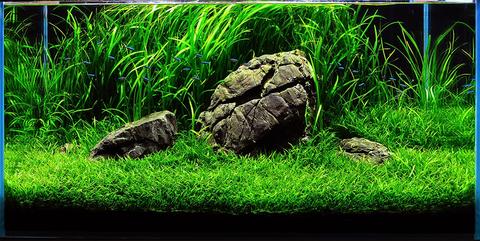
Aquascapes are beautiful yet complex. I’m going to list out the main three aquascaping styles in our aquarium hobby then will link to articles that go more in-depth. The top three scaping styles are:
- Iwagumi (A three stone Sanzon Iwagumi is pictured above)
- Nature Aquarium
- Dutch Style
Of the 3 styles, the most trendy currently is the Nature Aquarium. This style has been popularized by ADA and featured in many aquascaping competitions.
Selecting Fish
When it comes to fish for aquascapes, schooling fish are going to be the more ideal. There is are also design elements to keep in mind when selecting fish. This would be:
- Smaller and long fish add a dynamic effect to a planted aquarium
- Tall and round fish add calm and peacefulness
There are also sizes of the aquarium to keep in mind to. I’ll split this by size so you can determine what fits for you and include links to the fish profiles:
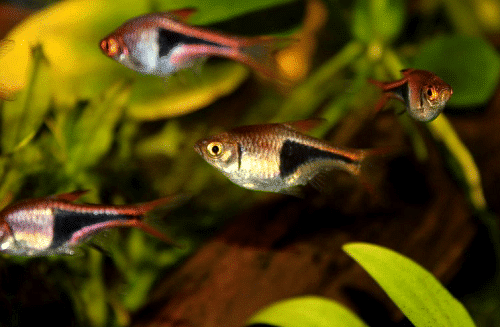
- Small Tanks: Rasboras, Tetras, Cherry Barbs, Danios, Betta Fish, Livebearers, Killifish
- Medium Tanks: Congo Tetra, Rainbow Fish, Blue Ram Cichlid
- Large Tanks: Angel fish, Discus
There are other inhabits you can include such as freshwater shrimp and algae eaters like Otocinclus. The schooling fish are the heart of the scape. The other fish and inhabitants are functional fish that serve a role such as algae eating.
How to Set Up a Fish Tank with Live Plants
We are going to work with level 2 setup here – low-tech with CO2 supplementation using SeaChem Excel. I’ll use a 60P tank to build. Here would be the list to setup:
- Aquarium – UNS 60U or Landen 60P
- Stand – Aqua Worx Aquarium Stand – 60U
- Filtration – Oase Biomaster 350
- Driftwood – Manzanita or Spiderwood Driftwood
- Substrate – Tropica Aquarium Soil – Powder Granule
- Aquarium Lighting – Fluval Plant 3.0 or Twinstar E-Series
- Plants (examples below)
- Easy To Care For- Bucephalandra, Anubias Nana, Crypts
- Carpets – Micranthemum ‘Monte Carlo’, Dwarf Hairgrass
- Mosses – Java Moss, Christimas Moss
- Reds – Ludwigia Natans Super Red, Ludwigia Repens
This is likely a higher end setup than what you would typically see. I want to set you up for success. This setup is more future proof as you can step up to CO2 and more aggressive growing aquatic plants as the foundation of the system is setup to handle this. You may have to upgrade the light if you push to high light demand plants, but this should get you going well.
Common FAQS
Are they hard to maintain?
If setup with a beginner in mind, they will not be hard to maintain. Planted aquariums can be as easy to maintain or as difficult as you want. It all depends on your plant selection, your light intensity, and CO2 injection. A fish tank with high intensity aquarium lighting and CO2 injection will require lots of pruning. A tank with low intensity and no CO2 will requirement less pruning, but may struggle with excessive algae growth.
Do these tanks need water changes?
Most planted tanks will require water changes. There are some low tech setups that can be designed to live without water changes. They are not the best looking, but one of the easiest to maintain aquariums. Most high energy planted tanks will require regular water changes due to purposely overdoing aquarium fertilizers to reset the system (known as the estimative index1).
What is the best substrate?
The best substrate for a planted aquarium would be an active substrate. The best beginner active substrate for an aquascape would be Tropica aquarium soil powder. The best advanced active substrate would be ADA’s Amazonia substrate system.
Can I use LED lights?
Yes, you can use LED lights for planted aquariums. They have come a long way since they were first introduced. Many even include timers, dimmers, and color spectrum customizations that can all run off your smart phone! They are the new wave of lighting in our hobby.
Further Reading
This blog article is fairly long and there is a whole bunch I could get into. The best way to get more in-depth on this is with books. Here is what I would recommend for reading:
Aquascaping – By George Farmer
Created by UK Aquascaper and co-founder of the UK Plant Society, George Farmer. This book is a full color 317 page deep drive into the incredible world of aquascaping!
This to me is the modern aquascaping bible. Created by world renowed aquascaper and YouTube personality George Farmer, this book offers a lot of information well beyond the scope of this blog post. I highly recommend this to anyone who is serious about getting into aquascaping.
Sunken Gardens – A Step By Step Guide To Planting Freshwater
Written by American Aquascaper, ADA Judge, and editor of AGA magazine Karen Randall. This 252 page book offers an in-depth look into your first aquascape build!
Karen is a seasoned aquascaper and past president of the Boston Aquarium Society and chairs several aquascaping competitors every year. Her book goes into great detail about planted aquarium setup and has several how to picture tutorials.
Closing Thoughts
This article was a joy to write up. Passionate subjects like this I can write for days 😅.I hope you’ve found this article helpful in understanding how to maintain a planted aquarium. If you have any other questions, please don’t hesitate to leave them in the comments below and I will get back with an answer for you as soon as possible! Happy scaping!
- About the Author
- Latest Posts
I’m thrilled that you found Aquarium Store Depot! Here you’ll find information on fish, aquariums, and all things aquatics related. I’m a hobbyist (being doing this since I was 11) and here to help other hobbyists thrive with their aquariums! I adhere to a high quality Editorial Process and Review products with real life field usage and practical analysis.

